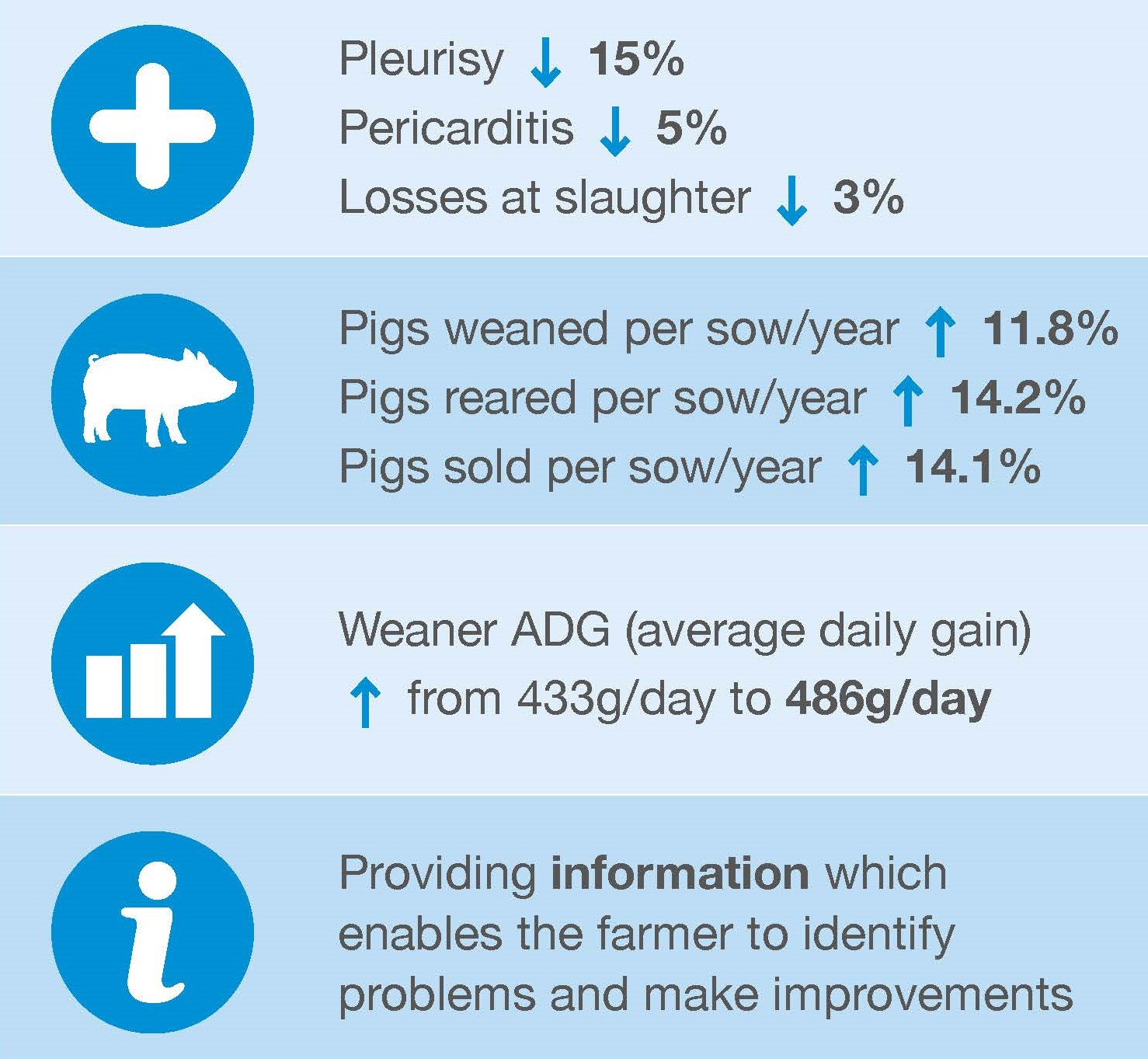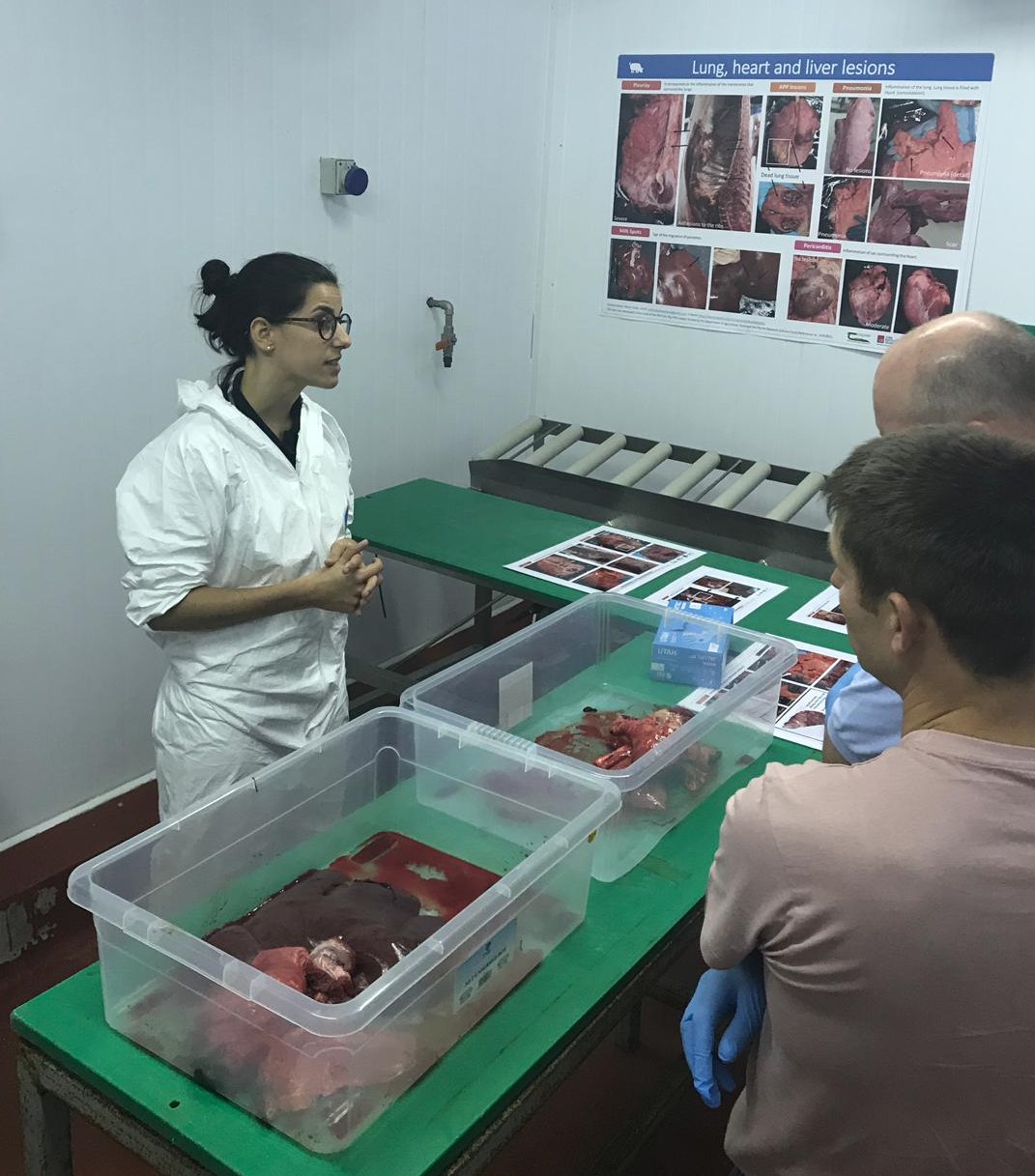- Home
- EU PiG – Use of slaughter data to develop dashboard system to improve pig herd health
EU PiG – Use of slaughter data to develop dashboard system to improve pig herd health
Production data exists in different ‘boxes’ or databases, from breeding to slaughter. The movement of this data from one box to another was done by farmers when they had time.
Ambassador: Patrick Ryan, Ireland
Publication date: July 2020
Theme: Health management
Challenges: Use of slaughter data to improve health outcomes
Using dashboards and visualisations of the data to help farmers make management decisions is becoming more common, increasingly in areas such as slaughter data, where significant benefits to productivity, health and welfare can be made through better use of data.
Training station on effects of biosecurity on pig health
Routine data (lung and liver) from the slaughter plant was incorporated into a dashboard system to look at various production and management parameters on Patrick Ryan's farm, including herd performance figures, biosecurity assessment, pluck (lungs and liver), tail check and antimicrobial benchmarking.
Read the #Benchmarkyourfarm report
Results
Benefits
- Reduction in pleurisy (approx 15%) and pericarditis (approx 5%) – Reduced losses at slaughter (approx 3%)
- Weaner ADG has increased from 433 to 486 g/day
- Pigs weaned per sow/year – increase of 11.8%
- Pigs reared per sow/year – increase of 14.2%
- Pigs sold per sow/year – increase of 14.1%
Costs
- Vet visits – These are routine and not an additional cost
- Feed (Euro/kg live weight) – 0.73
- Total costs (Euro/kg live weight) – 1.17
Use of slaughter data to improve health outcomes
Data from the slaughter plant is incorporated into a dashboard system to look at various production and management parameters. The variables used are imported into a database to produce a report which allows for benchmarking and setting targets.
Benefits
 EU PiG
EU PiG
Innovation in practice
The main variables used for the dashboard are imported into an excel database to produce a report which allows for benchmarking and setting targets.
The main identified issue was the high levels of pleurisy and pericarditis, which the farmer did not realise were a problem. The dashboard changed his focus into control of these by better batch management, reduced mixing and creating separated streams for weak pigs. This resulted in improved performance via improved pig health and associated reduced use of antibiotics.
Case studies
 EU PiG
EU PiG
Farmers attending a training station on recognition of lung lesions
Animal health best practice challenges
Use of slaughter data to improve health outcomes
African swine fever (ASF) biosecurity measures
Early warning of diseases and production errors
Influence of gut health on disease and production
Optimal vaccination strategies
Reducing antimicrobial medication
Contact us
To access more information, contact RPIG (Ireland): Ciaran Carroll or EUPig@ahdb.org.uk
This project has received funding from the European Union`s Horizon 2020 research and innovation programme under grant agreement No 727933.
 Government logo
Government logo

